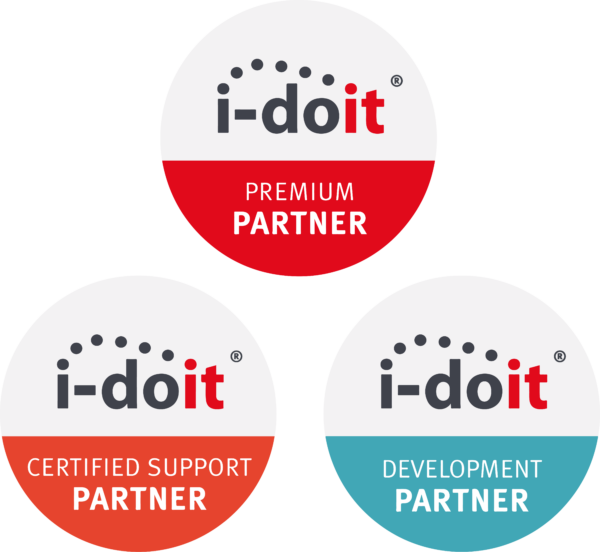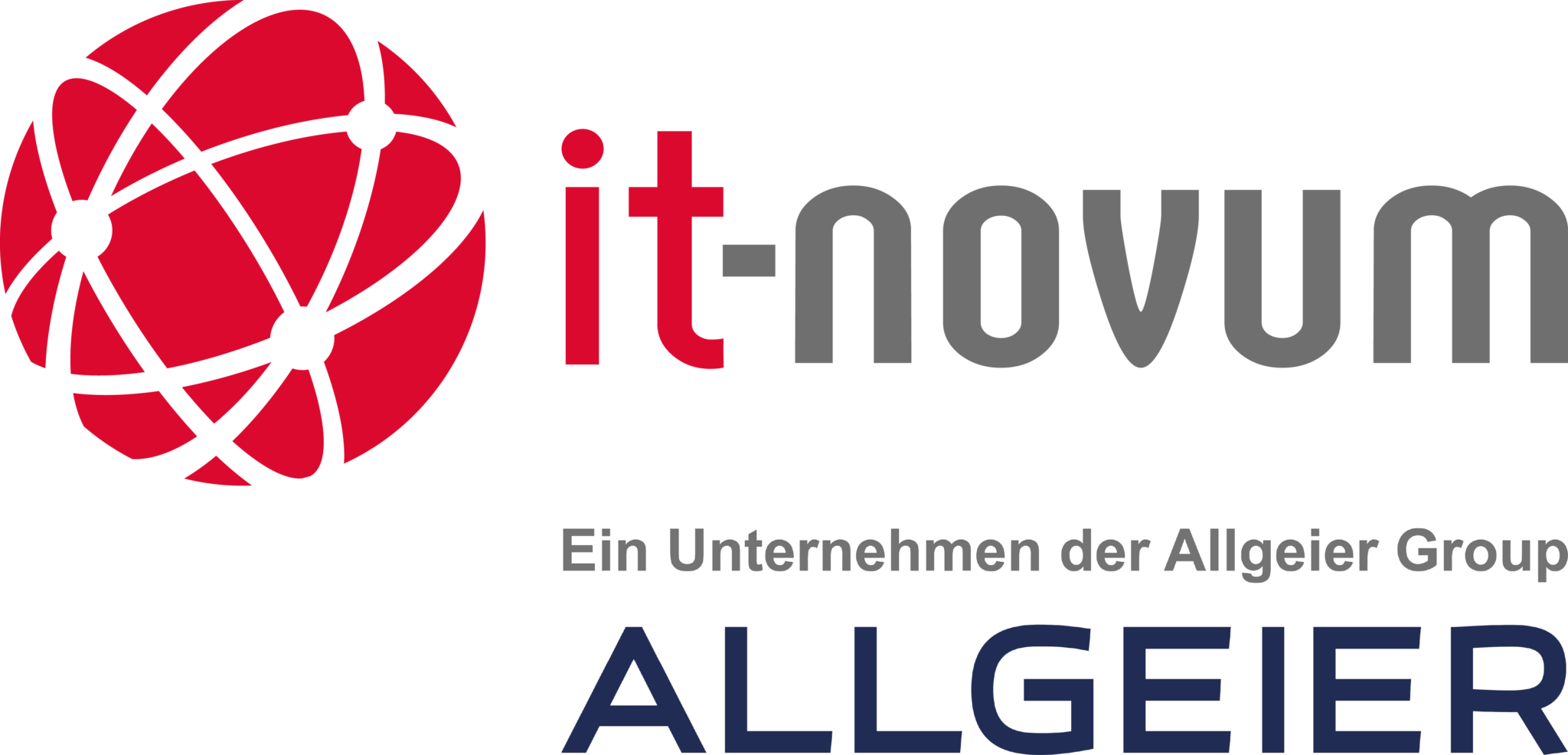i-doit
i-doit: Your central information hub
With i-doit, companies have at their disposal a software solution that enables them to set-up a CMDB using open-source software. At the same time, by implementing i-doit, companies also have the opportunity to map out their ITIL processes and establish and build a comprehensive service management structure. The data captured can also be used to form the basis for a successful configuration, problem and event management system.

i-doit – Your most important areas of use:
- IT service management with monitoring, discovery and helpdesk functions
- Technical and network documentation
- Licence documentation
- Contract management
- Lifecycle management
- Linking CMDB with facility management, smart metering and MDM
- Briefly explained
i-doit Projects
Would you like us to help you successfully implement your own i-doit project? Or perhaps you would like to buy i-doit licences?
We also implement i-doit in non-IT sectors such as in hospitals for managing assets or with alternative energy producers who want to better manage their wind turbines and components.

"Our IT infrastructure documentation and management is based on i-doit. Its performance under actual working conditions is what really sold us!"
Combining IT documentation with system monitoring and service management
i-doit / openITCOCKPIT Connector
The openITCOCKPIT / i-doit Connector makes setting up a monitoring system significantly easier. Once a system has been entered into the CMDB, it is automatically included in the monitoring process. After the user has added all relevant assets to the i-doit database, all applicable objects can then be exported. Templates for carrying out checks are automatically assigned by the interface as part of the installed software recognition process. The i-doit group assignment function for CIs (configuration items) can then be used to manage the selected import of these items via profiles. Further information about the i-doit /openITCOCKPIT Connector
i-doit / ((OTRS)) Community Edition Connector
Good service and incident management requires that information is available as quickly as possible. So in the event of an incident, it is important to know which configuration item (CI) is affected. With the help of the connector developed by it-novum, it is possible to automatically provide relevant information for the service desk in the ticket system Znuny. More information about the i-doit / Znuny Connector
i-doit and it-novum
For many years, i-doit and it-novum have had a close and successful working partnership. Together during this time they have realised numerous projects with both medium-sized companies and international corporations. As a result, an enormous amount of expertise has been gained in the implementation of CMDB solutions. It-novum has also developed bi-directional interfaces to ensure you can make the most of the synergies gained between i-doit and your monitoring solutions, ticketing systems and/or inventory software.


Stephan Kraus
Director IT Service Management
We support you with your i-doit documentation project
The benefits of i-doit
Flexibility in customization
A very important feature of any good CMDB is that it should give you the ability to define how you structure your assets (these are referred to as objects in i-doit). And exactly this can be done in i-doit. Using i-doit, you can achieve a very high degree of granularity when deciding which categories are important to you and which aren’t.
Always in the picture reporting with i-doit
Maintaining your infrastructure data is one thing. Actually having a comprehensive overview of this information, however, is another. Using the native i-doit reporting function, you can produce very detailed reports about all aspects of your system. This means users can include every value maintained in the i-doit system.
It security with the VIVA module
With VIVA, an information security management system, ISMS for short, can be built up from the existing data in i-doit’s CMDB. This is a list of procedures and rules within a company that permanently define, control, monitor, maintain and continuously develop information security.
The VIVA module is based on BSI IT baseline protection, which supports ISO 27001 certification. However, it is not possible to import an ISO 27001 catalog directly.
Features of i-doit
Technical documentation
Network documentation
Licences and contracts
Reporting
Notifications
i-doit can also be configured so that events will trigger automatic email alerts – for example, when threshold values have been reached for licence / notice periods or when the system registers a change in status. Data for potential recipients can also be provided by linking to an Active Directory structure.
Visualisation
With the CMDB Explorer, administrators can display certain technical assets in a graphical overview that clearly lays out dependencies, relationships and affiliations. Thus, it is relatively easy to depict an entire network structure or virtualisation environment.
Import / Export
With i-doit, it’s not only possible to export current data for use in other programs, the system also includes extensive functions for importing previously sorted and maintained data. CSV and Excel tables are also not a problem: Profiles, field mapping and validation functions for importing complex source data are always available for use.
Event management
Using the event management feature, it is possible to launch automated processes directly from documentation. There is practically no limit to the possibilities this affords you: the automatic provisioning and deletion of virtual machines, the initiation of software installations or the creation of monitoring objects.
Log book
An important reason for introducing a CMDB is audit security, which is ensured in i-doit by a logbook: every change made to the documented objects in i-doit is logged here.
It is also possible to activate a comment function, which encourages the user to communicate every change in the system.
Import processes, modules and interfaces also use the logbook to log their changes.
Clients
Using an appropriate licence, multiple customers can be created as clients in i-doit. This gives each customer his own i-doit instance with corresponding individual access points. This ensures data security by only allowing customers to access their own data and blocking access to that of other clients in the system.


